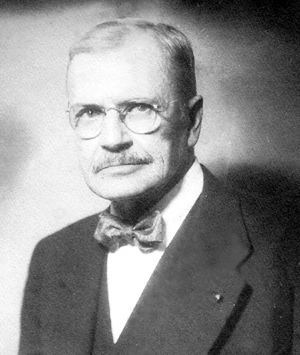Name Charles Lay | Role Architect Structures Manley-Lefevre House | |
 | ||
Died February 15, 1956, Stratford, Connecticut, United States | ||
Charles Downing Lay (September 3, 1877 – February 15, 1956) was an American landscape architect.
Contents
Early life and family estate
The son of Oliver Ingraham Lay, a professional painter, and Hester Marian Wait Lay, Charles Downing Lay was born in Newburgh, New York. At age 7, Lay began spending summers with his grandmother in Stratford, Connecticut. Her house was located at 95 Chapel Street, which is approximately 100 yards (91 m) away from the banks of the Housatonic River. Lay spent much of his childhood in Stratford fishing, sailing, and swimming and developed a great appreciation for nature. The Housatonic, along with the Long Island Sound, would greatly influence the course of Lay's career.
Lay inherited his grandmother's estate, the land he first fell in love with, in 1900 and he remained there until his death in 1956. The property was not extensive and although the landscape was informal, there was little to suggest a truly naturalistic landscape. Walls, ramps, and steps with planting occupied the slope between houses, with interesting plants planted in a casual manner. There was little space between the houses and the country road to the north; the outdoor living areas were focused on the south view toward Long Island. These areas were bounded by old stone walls with large lawns and perennial borders surrounding the grounds. Always planning further improvements, he often experimented in growing new plants. In 1947, shortly before retirement, Lay bought 85 acres (340,000 m2) in Lyme, Connecticut, near Selden Creek, where he spent time with his wife and family during the summers. He described this land as "farm grown to woods which I subconsciously had been longing for."
Education and career
Lay attended the School of Architecture at Columbia University from 1896 to 1900 before transferring to Harvard University's School of Landscape Architecture, from which he graduated in 1902, the second man to achieve a Bachelor of Science degree in the field. The first, Henry Hubbard, had been Lay's teacher when Lay was working on his M.L.A. in 1906-1908 and in 1910, Hubbard and Lay, in partnership with Robert Wheelwright, opened a landscape architecture firm in New York City. They practiced under the name Lay, Hubbard, and Wheelwright and began publishing the professional journal Landscape Architecture in October 1910. In 1911, the journal was named the official publication of the American Society of Landscape Architects, a title it still holds today. Lay served as an editor and manager until 1921.
Aware of significant population growth in American cities during the early 20th-century, Lay became increasingly concerned with the availability of urban outdoor space. He worked for New York City's Parks Department from 1913–1914 and proposed improvements to Albany, New York. During World War I, Lay was a planner for the U.S. Housing Corporation and served as a consultant on the planning and development of Navy air and service stations during World War II. In addition to a wide variety of commissions from private clients, Lay designed public parks in New York City; Albany; Troy, New York; Schenectady, New York; Brooklyn; Washington, D.C.; and Stratford, Connecticut; well as for the United States Housing Corporation in Erie, Pennsylvania and Butler, Pennsylvania. Building on his interest in urban planning, he developed some of the first subdivisions in suburban New York, Massachusetts, Rhode Island, and Connecticut. Interested in providing greater access to outdoor space for citizens of New York City, Lay also completed a study for a Nassau County, New York, park system, which now numbers 83 parks. In addition to his other accomplishments, Lay received a silver medal from the 1936 Berlin Olympics for his work on Marine Park in Brooklyn.
Projects
Charles Downing Lay designed or contributed to the design of countless parks, subdivisions, private estates, and gardens throughout the United States, although his influence was most apparent on the East Coast.
Some of his major projects include:
Legacy
In his professional writings and landscape practice, Lay frequently advocated for a closer relationship between man and nature and argued that natural resources could be beneficial for society if not misused. His lifelong love for the landscape around Statford, Connecticut, led Lay to found the Housatonic Valley Conference in 1937, later renamed the Housatonic Valley Association. The HVA now protects all 2,000 square miles (5,200 km2) of the tri-state region known as the Housatonic River Valley. The Association helps with conservation and cleanup of the Valley and has saved more than 5,000 acres (20 km2) of farmland wetlands, riverfronts, and forests.
